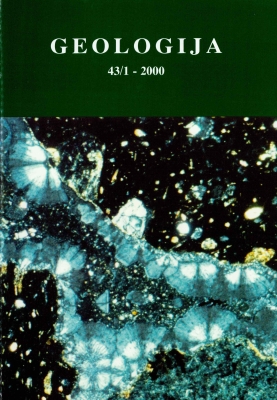Accretionary lapilli in Pliocene volcaniclastics from Grad, northeastern Slovenia
DOI:
https://doi.org/10.5474/geologija.2000.006Abstract
The Grad area, north-eastern Slovenia is characterised by Upper Pliocene volcanic activity, which produced minor lava flows and scoria deposits. In the late-stage of volcanic activity, hydrovolcanism predominated and it produced pyroclastic surge deposits rich in accretionary lapilli. This alkali basaltic (basanitic) volcanism occurred on the surface of alluvial fan, and consequently, its products were easily reworked by fluvial currents. Some accretionary lapilli and armoured lapilli survived redeposition and can be encountered in mixed fluvial-volcaniclastic sediments. Armoured mud balls developed under normal sedimentary processes involving sliding of unconsolidated material under gravitation.Downloads
How to Cite
Kralj, P. (2000). Accretionary lapilli in Pliocene volcaniclastics from Grad, northeastern Slovenia . Geologija, 43(1), 67–73. https://doi.org/10.5474/geologija.2000.006
Issue
Section
Articles

